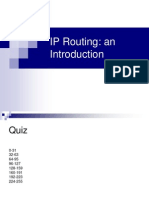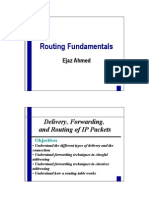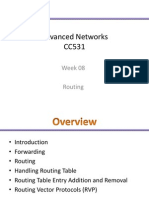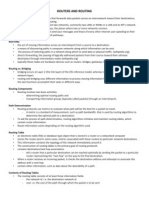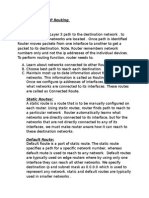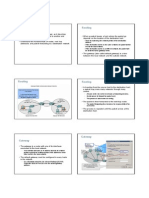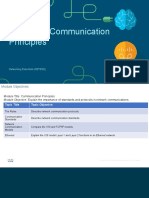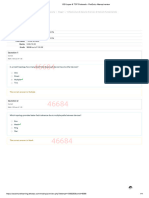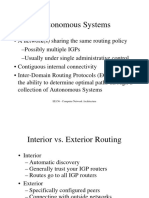0% found this document useful (0 votes)
30 views12 pagesIP Routing Basics
IP routing determines the shortest path for data to travel from source to destination across networks, utilizing various protocols and technologies. It involves routers that forward packets based on routing tables, which contain information about network paths and metrics. Different types of routing include static, dynamic, and default routing, with protocols categorized into interdomain and intradomain routing for effective data transmission.
Uploaded by
derrickcalvinceCopyright
© © All Rights Reserved
We take content rights seriously. If you suspect this is your content, claim it here.
Available Formats
Download as DOCX, PDF, TXT or read online on Scribd
0% found this document useful (0 votes)
30 views12 pagesIP Routing Basics
IP routing determines the shortest path for data to travel from source to destination across networks, utilizing various protocols and technologies. It involves routers that forward packets based on routing tables, which contain information about network paths and metrics. Different types of routing include static, dynamic, and default routing, with protocols categorized into interdomain and intradomain routing for effective data transmission.
Uploaded by
derrickcalvinceCopyright
© © All Rights Reserved
We take content rights seriously. If you suspect this is your content, claim it here.
Available Formats
Download as DOCX, PDF, TXT or read online on Scribd
/ 12

















